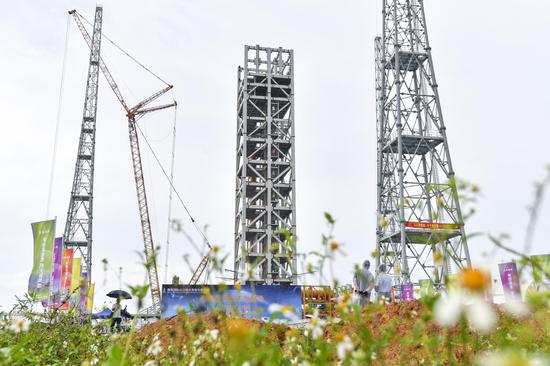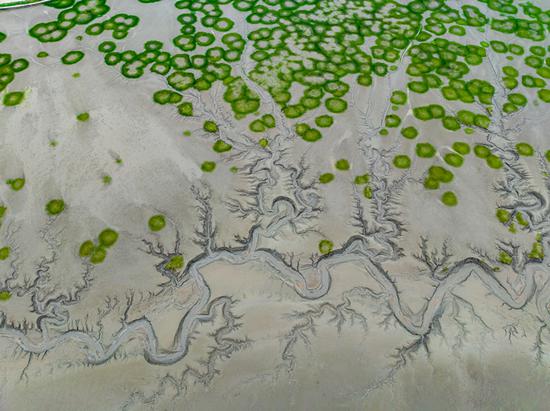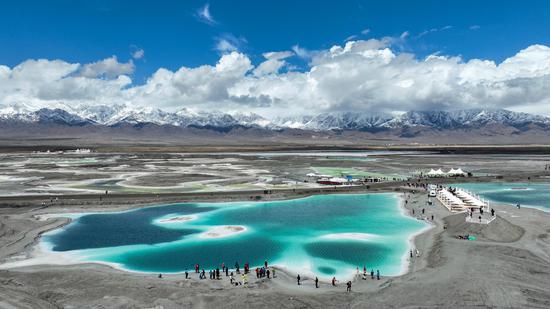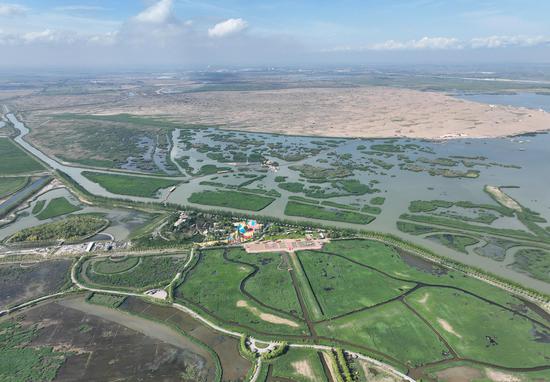As of Monday, China's first zero-carbon desert highway - the longest photovoltaic (PV) demonstration project for irrigation and sand control at the Tarim Oilfield in the Taklimakan Desert, Northwest China's Xinjiang Uygur Autonomous Region - had generated more than 5 million kilowatts of green electricity, realizing sand control and environmental protection, China Media Group (CMG) reported on Tuesday.
According to the CMG, the demonstration project has set up 86 PV power stations along the desert highway, generating electricity to irrigate more than 3,100 hectares of ecological protection forests along the highway, providing a comprehensive alternative to diesel power pumping irrigation.
"The PV device supporting the zero-carbon desert highway generates about 11,000 kilowatts of electricity per day, and all 109 water wells along the highway use clean electricity for pumping and irrigation. They can meet the technical requirements of PV power generation plus energy storage for seven hours," Wen Zhang, a deputy general manager of Tarim Oilfield, PetroChina, was quoted as saying in the CMG report.
The total installed capacity of the PV power stations along the desert highway has reached 3,540 kilowatts, with an annual generation capacity of 3.62 million kilowatt-hours, said the report.
"We have adopted the cyclic development model of power generation on the PV panels, planting under the panels, and comprehensive utilization of water resources as a whole, to transform the ecological environment of the desert hinterland," Meng Panlei, an engineer from the oilfield, said.
According to estimates, this green project will reduce diesel fuel consumption by about 1,000 tons and carbon dioxide emissions by about 3,410 tons per year.
The Tarim Oilfield has built four PV power stations with a total installed capacity of 1.3 million kilowatts in the hinterland of the Taklamakan Desert and its outskirts. These four stations have cumulatively produced more than 700 million kilowatts of green electricity, which provides a guarantee for the supply of electricity to meet the peaks of the summer season and for the green development of the local economy.
"China has been actively practicing its commitment to achieving its dual carbon goals, and the zero-carbon highway in the Tarim Oilfield is a fresh example and has a demonstration effect," Lin Boqiang, director of the China Center for Energy Economics Research at Xiamen University, told the Global Times on Tuesday.
China's steadfast efforts in advancing clean energy and fostering global cooperation have emerged as a crucial driver, propelling the world toward a greener future, experts noted.
Data from the National Energy Administration showed that China contributed more than 50 percent of the 510 gigawatts of newly installed renewable energy capacity worldwide in 2023.


















































 京公网安备 11010202009201号
京公网安备 11010202009201号